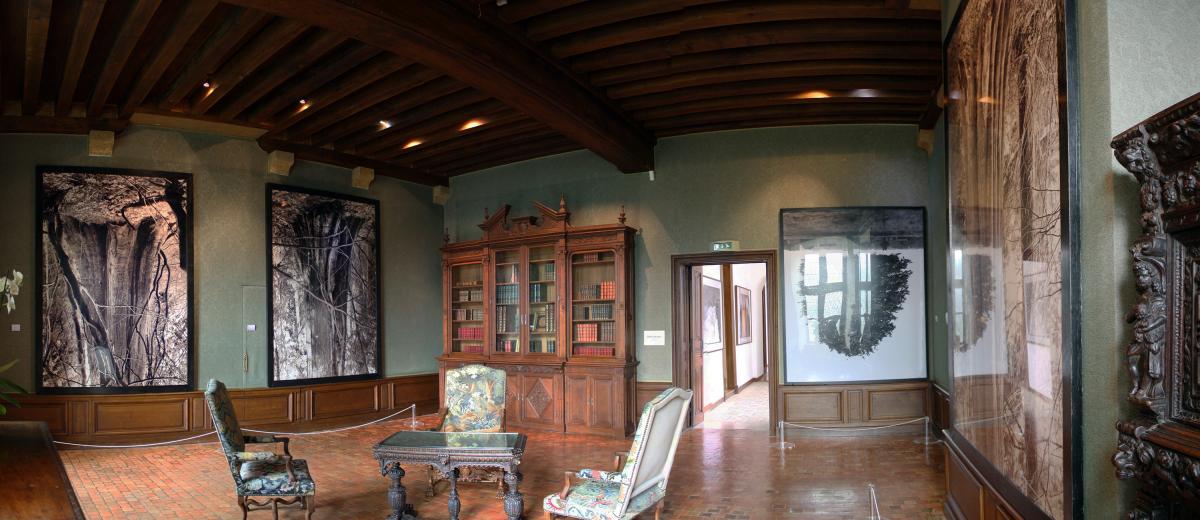Château
Rodney Graham
published at 06/06/2019

Rodney Graham display a series of photographs of upside-down trees, as if suspended on the landscape, at the Domaine de Chaumont-sur-Loire, in connection with his interrogation of the means of perceiving art. A universal symbol and image, here the tree represents the idea of nature and a need for ecological awareness. The inverted image is also the first photographic image and recalls the principle of the darkroom or the camera obscura.
Since the middle of the 1970s, Rodney Graham has been re-examining certain bases of western culture.
His work is intelligently paradoxical, based on a strange mixture of severity and melancholy, humour and erudition, coherence and eclecticism.
Repetition, citation and “mise en abyme” (placement into infinity) are strategies which he uses formally, psychologically and philosophically. Such strategies of appropriation and alteration help to develop a work which is profoundly original and personal.
BIOGRAPHICAL NOTES
Rodney GRAHAM
CANADA
Born in 1949 in Abbotsford (Canada), Rodney Graham studied history of art at the University of British Columbia and at Simon Fraser University in Vancouver, the city where he now lives and works. Mainly known for his design work, he is also a writer, a composer and a sculptor.
Since the beginning of the 1980s, he has been exhibiting in North America and Europe. He took part in the Documenta IX in Kassel in 1992 and in the Venice Biennial the following year where he represented Canada.
In 1999, a large exhibition was dedicated to him at the Vienna Kunsthalle.
Mainly known for his conceptual films and performances, Rodney Graham has produced rigorously intellectual work which tackles all registers of artistic creation, up to music and even writing.
In another area, the Cedar Tree series consists of photographs of upside-down tree trunks, in shades of sepia.
The view of an upside-down world, these photographs respond to evidence that the world is not how we imagine; before our brain rectifies the image formed on our retina by rotating it 180°, the image is printed upside down like in a ‘camera obscura’.
Rodney Graham’s works (films, videos, photographs, models, books and scores) question the means of perceiving art. Using a rigorous design method, they analyse the formal, narrative structures of various media in order to better undermine the foundations.